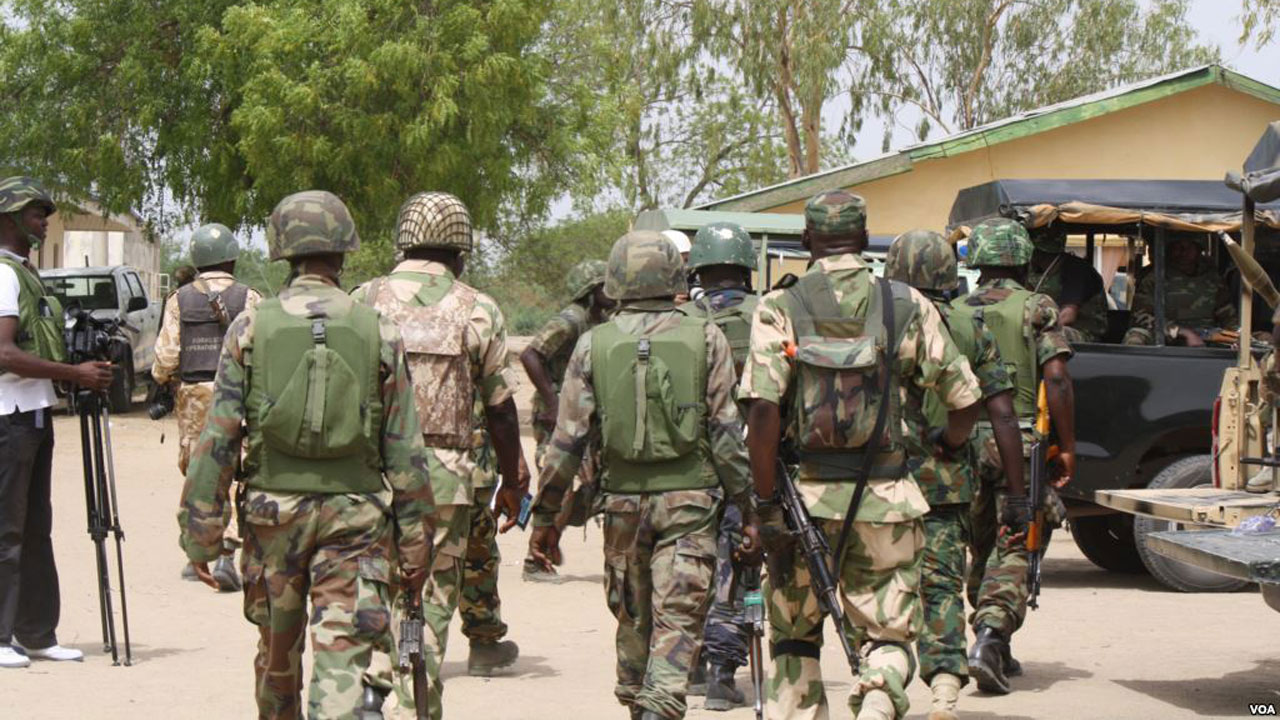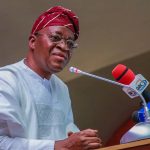
Fresh revelations have emerged on why the Nigerian Army is yet to clear the remnant of Boko Haram terrorists from the Northeastern part of the country.
A report by the Centre For Social Justice, Equity And Transparency, CESJET, said fake news, foreign actors were major distractions to the Army in clearing remnants of Boko Haram elements operating in the northeast.
In a statement signed by its Executive Secretary, Isaac Ikpa, CESJET tasked the media, citizens and all stakeholders to be patriotic in identifying and exposing fake news targeted at derailing the war against Nigeria’s enemies.
The report reads: “The menace of fake news in Nigeria is a time bomb waiting to explode. This is on the heels that misinformation and hate speech have threatened the peace, unity, security and the corporate existence of Nigeria.
“The relevant authorities in Nigeria have strived to educate the populace on the demerits of fake news and how its continued patronage has aided the spread of terrorism in the country.
“The Centre for Social Justice, Equity and Transparency, in carrying out one of its core mandate consequently commissioned a special report to look at the menace of Fake News in Nigeria in an attempt to bring to the fore the various factors responsible for the spread of Fake news in Nigeria, as well as measures the relevant authorities needs to put in place to curtail the spread of fake news in the country.
“The Centre for Social Justice, Equity and Transparency x-rayed the origin of fake news in Nigeria and took a systematic approach in highlighting the impact on the Nigerian polity. It also looked at the various mediums through which fake news is propagated. The focus of the report was 2015 to 2019 to cover the years that fake news gained prominence in Nigeria. The choice of 2015-2019 was also informed by the numerous efforts of the relevant agencies in Nigeria towards arresting the menace of fake news in the polity.
“Terrorism is now a major feature of the international political system in the 21st century. Terrorism in the 21st century has gone beyond its traditional conception both in the motivations, objectives, tactics, techniques and territorial aspiration of its actors. Traditional terrorism uses kidnappings, suicide bombings (human and vehicle borne), hostage-taking, improvised explosive devices (IEDs) and armed assaults to achieve mostly political objectives. Terrorism in its present incarnation has expanded from the physical (geographical regions) into the virtual (cyberspace) and its techniques now include the use of technology-driven devices such as unmanned aerial vehicles, Twitter, Blogs Youtube and Facebook. Terrorists’ objectives have gone beyond such abstract concepts as instilling fear, creating awareness for a particular cause and forcing governments to change specific policies, to tangible and disruptive aims like the creation of viable political, administrative, religious and territorial units.
“Terrorism has been around since the beginning of recorded history. What have changed are the dissident groups’ capability of inflicting harm on an ever-larger number of people, their ability to organize through the Internet, and, thanks to the media, a heightened concern, bordering on paranoia, among the populace about their own security. Domestically, nations, are deeply concerned about the radicalization of the youth along the entire ideological spectrum. Increased migration from the war-torn areas and failed states is not only putting strains on the nations’ resources but is also fomenting xenophobic reactions among native populations.
“There are also fears of terrorist cells among immigrant minorities, isolated in their enclaves. To this volatile mix, we must add the internecine warfare with deep historical roots in the Middle East, Africa, and Asia. Thus, fake news is an enhancer of terrorism and terrorist activities around the world.
“Fake news and its Terrorism Influences: Media and terror are inextricably linked. The media is expected to report and analyse terror as a matter of international priority. Yet striking the right balance between informing the public without unnecessarily stoking fear or giving disproportionate publicity and attention to a terrorist organisation is a complex task. To make matters even more complicated, since the emergence of new media, social media in particular, ‘traditional’ media has had to adapt to and compete in an accelerated news cycle of reporting, commentary and analysis.
“Digital platforms such as Blogs, Twitter and Facebook have changed the flow of information in a way that enables unverified user-generated content (UGC) to appear alongside media outlets’ fact-checked content. Unlike traditional media, UGC isn’t subject to strict editorial, ethical or practical guidelines and the speed and scale at which this information is created and disseminated is hard to contain. This presents challenges to news reporting on terror, such as the spread of misinformation and ‘fake news’.
“There has been an increasing focus on violent activities in social media and what would traditionally be categorized as criminality has increasingly branded as ‘terrorism’ as event unfolds and before all of the facts can be ascertained and a judgment made upon factual evidence. The use of social media and other media sources contributes in part to the premature categorisation of these events and creating unnecessary hype.
“The use of language, labeling coupled with unsubstantiated or grossly inaccurate facts before an event has been analyzed, can result in misinformation and heighten the public fear unnecessarily.
“The difficulty is thus separating the fake news about terrorism, the over-exaggerations and untruths from what unfolds. In doing so this creates confusion, fear and unnecessarily intensifies events at a time when the focus should be primarily on dealing with an incident and helping the victims, whether injured or deceased and those directly affected by the event. A further problem arises which is event fatigue: individuals becoming desensitised to images of pain and suffering and the acceptance of a new norm.
“The question then becomes what can we do to ensure the accurate flow of information and the correct categorisation of events. The other interesting question is that terrorist groups or cells manipulate criminals and mentally ill persons to carry out criminal attacks to ensure that they take credit for these events.
“Communicating accurate information and minimising the spread of rumours and conspiracy theories is vital to supporting the public during a time of crisis. News media outlets and social media platforms should play complementary roles in this process: news media must try to ensure that correct information is disseminated, and social media platforms should be more vigilant in preventing bots and propagandists from flooding online platforms with misinformation. The role of independent, nuanced and responsible journalism has never been more important—and yet there’s a growing distrust of mainstream media’s reporting on terror. This stems from Trumpian rhetoric and accusations of fake news, as well as from public perceptions of media bias when reporting on attacks.
It is important for our security experts to remain vigilant. The reduction of misinformation and the accurate use of terrorist terminology relating to events, foiled plots and threats will not detract from the overall objective of public protection but rather will strengthen and focus this goal. Clear information and a common focus on ensuring accurate information is disseminated can be complemented by the accurate and honest acknowledgment of the real threat and the due recognition of the excellent job which the security industry has done to date to abate attacks and minimise the potential for any future events.”





